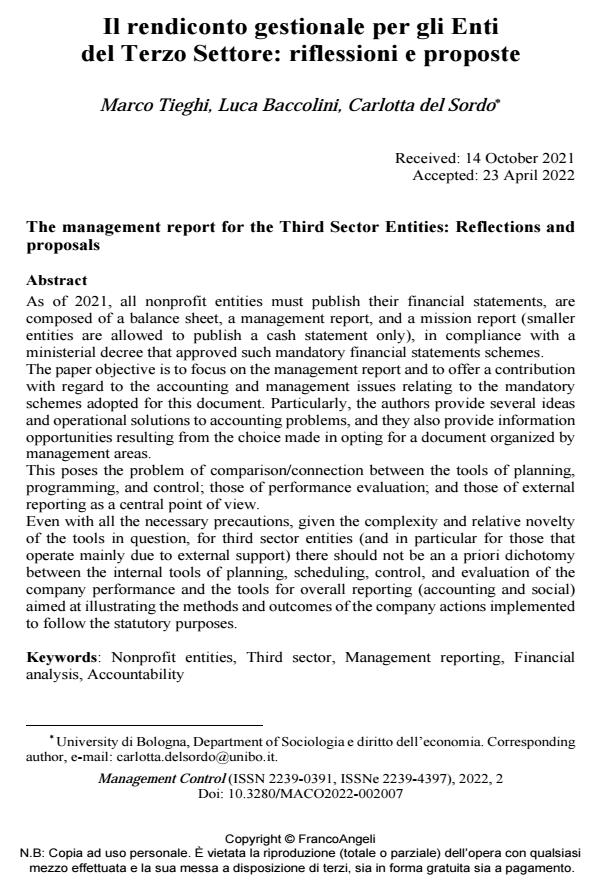Il rendiconto gestionale per gli Enti del Terzo Settore: riflessioni e proposte
Titolo Rivista MANAGEMENT CONTROL
Autori/Curatori Marco Tieghi, Luca Baccolini, Carlotta del Sordo
Anno di pubblicazione 2022 Fascicolo 2022/2
Lingua Italiano Numero pagine 23 P. 141-163 Dimensione file 303 KB
DOI 10.3280/MACO2022-002007
Il DOI è il codice a barre della proprietà intellettuale: per saperne di più
clicca qui
Qui sotto puoi vedere in anteprima la prima pagina di questo articolo.
Se questo articolo ti interessa, lo puoi acquistare (e scaricare in formato pdf) seguendo le facili indicazioni per acquistare il download credit. Acquista Download Credits per scaricare questo Articolo in formato PDF

FrancoAngeli è membro della Publishers International Linking Association, Inc (PILA)associazione indipendente e non profit per facilitare (attraverso i servizi tecnologici implementati da CrossRef.org) l’accesso degli studiosi ai contenuti digitali nelle pubblicazioni professionali e scientifiche
As of 2021, all nonprofit entities must publish their financial statements, are composed of a balance sheet, a management report, and a mission report (smaller entities are allowed to publish a cash statement only), in compliance with a ministerial decree that approved such mandatory financial statements schemes. The paper objective is to focus on the management report and to offer a contribution with regard to the accounting and management issues relating to the mandatory schemes adopted for this document. Particularly, the authors provide several ideas and operational solutions to accounting problems, and they also provide information opportunities resulting from the choice made in opting for a document organized by management areas. This poses the problem of comparison/connection between the tools of planning, programming, and control; those of performance evaluation; and those of external reporting as a central point of view. Even with all the necessary precautions, given the complexity and relative novelty of the tools in question, for third sector entities (and in particular for those that operate mainly due to external support) there should not be an a priori dichotomy between the internal tools of planning, scheduling, control, and evaluation of the company performance and the tools for overall reporting (accounting and social) aimed at illustrating the methods and outcomes of the company actions implemented to follow the statutory purposes.
Parole chiave:Nonprofit entities, Third sector, Management reporting, Financial analysis, Accountability
- La rilevanza dei componenti economici figurativi per gli Enti del Terzo Settore: riflessioni e proposte Marco Tieghi, Carlotta del Sordo, in WELFARE E ERGONOMIA 2/2023 pp.13
DOI: 10.3280/WE2022-002002
Marco Tieghi, Luca Baccolini, Carlotta del Sordo, Il rendiconto gestionale per gli Enti del Terzo Settore: riflessioni e proposte in "MANAGEMENT CONTROL" 2/2022, pp 141-163, DOI: 10.3280/MACO2022-002007